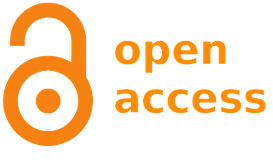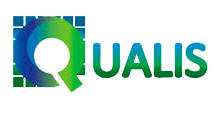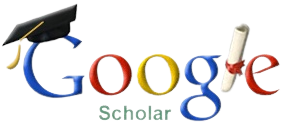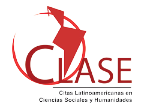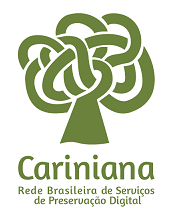Scientific communication and online attention: in search of virtual colleges underpinning altmetrics data
DOI:
https://doi.org/10.5433/1981-8920.2016v21n2p68Keywords:
Scientific Communication, Altmetrics, Online Attention.Abstract
Introduction: Informational exchanges around scientific communication activity have become increasingly dynamic in cyberspace, changing the practice of scientists and expanding the reach of research results that attain an increasingly significant online attention among different groups.Objective: To analyze whether altmetric data regarding online attention point to the existence of "virtual colleges" - composed of people from inside and outside the scientific community - around the scientific topic being discussed and shared in social media.
Methodology: An exploratory pilot study, with analysis focused on the impact of the open access article with the highest altmetric indicator for the year 2015, as disclosed by Altmetric.com in its ranking "Top 100". The qualification of online attention is described by the most expressive media (Twitter and Facebook) in a random sample (n = 10%) on which content analysis was carried out and categorization of the types of interaction and characterization of social groups that interacted around the article.
Results: The most common form of dissemination observed was retweeting on Twitter (62%) and sharing on Facebook (45%), followed by "conclusive" (16% and 25%) and "argumentative" (15% and 9.6%) categories. The profile of the users responsible for the circulation of and discussion about the article indicates the prevalence of members from the general public.
Conclusion: Altmetrics permit the tracking of the potentially more social and democratic impact assessment of scientific research, which becomes particularly evident for the case of articles featuring scientific research deemed to epitomise scientific controversies, the dimensions of which are played out in these "virtual colleges".
Downloads
References
ALTMETRIC. How is the Altmetric score calculated?. [S. l.]: Altmetric, 2014. Disponível em: https://help.altmetric.com/support/solutions/articles/6000233311-how-is-the-altmetric-attention-score-calculated-. Acesso em 15 jul. 2022.
ARAUJO, R. F. Marketing científico digital e métricas alternativas para periódicos: da visibilidade ao engajamento. Perspectivas em Ciência da Informação, Belo Horizonte, v. 20, p. 67-84, 2015.
ARAÚJO, R. F.; MURAKAMI, T. R. M. A. Atenção online de artigos de ciência da informação: análise a partir de dados altmétricos do Facebook In: ENCONTRO BRASILEIRO DE BIBLIOMETRIA E CIENTOMETRIA, 5., 2016, São Paulo. Anais [...]. São Paulo: USP, 2016. p. 1-8.
ARAÚJO, V. M. R. H.; FREIRE, I. M. A rede Internet como canal de comunicação, na perspectiva da Ciência da Informação. Transinformação, Campinas, v. 8, n. 2, p.45-55, 1996.
BENGSCH, D. 8 out of 8 million: Today we celebrate eight million researchers and scientists on ResearchGate. [S. l.]: ResearchGate Blog, 2015. Disponível em: https://www.researchgate.net/blog/post/8-out-of-8-million. Acesso em 21 ago., 2016.
CASTRO, R. C. F. Impacto da Internet no fluxo da comunicação científica em saúde. Revista Saúde Pública, São Paulo, v. 40, n. esp., 2006.
CAVE, R. Overview of the Altmetrics Landscape. In: CHARLESTON LIBRARY CONFERENCE, 32., 2012, Indiana. Proceedings […]. Indiana: Purdue University Press, 2012. p. 349-356 Disponível em: http://docs.lib.purdue.edu/cgi/viewcontent.cgi?article=1381&context=charleston. Acesso em 17 ago 2016.
CHAFFEY, D. What happens online in 60 seconds?. Leeds: Smart insights. Disponível em: http://www.smartinsights.com/internet-marketing-statistics/happens-online-60-seconds/. Acesso em: 15 jul. 2022.
FAUSTO, S.; MACHADO, F. A.; BENTO, L. F. J.; IAMARINO, A.; NAHAS, T. R.; MUNGER, D. S. Research Blogging: Indexing and Registering the Change in Science 2.0. Plos One, San Francisco, v. 7, p.e50109, 2012.
GARVEY, W. D.; GRIFFITH, B. C. Scientific communication in social system. Science, New York, 157, p.1011-1016, 1967.
GURGEL, N. M. C.; MATOS, D. M. Diagnóstico das pesquisas virtuais da comunidade científica do Labomar. In: SEMINÁRIO NACIONAL DE BIBLIOTECAS UNIVERSITÁRIAS, 14., 2006, Bahia. Anais [...]. Bahia: UFBA, 2006.
HAUSTEIN, S.; BOWMAN, T. D; COSTAS, R. "Communities of attention" around scientific publications: who is tweeting about scientific papers?. In: SOCIAL MEDIA & SOCIETY INTERNATIONAL CONFERENCE, 2015, Toronto. Proceedings […]. Toronto: [s. n.], 2015. p. 1-20.
HORNBY, A.; LESLIE, B. Digital scholarship and scholarly communication. [S. l.]: University of Washington Libraries. 2013.
LE COADIC, Y. F. A Ciência da Informação. Brasília: Briquet de Lemos, 1996.
MEADOWS, A. A comunicação científica. Brasília: Briquet de Lemos, 1999.
MOREIRA, V. Os colégios virtuais e a nova configuração da comunicação científica. Ciência da Informação, Brasília, v. 34, n. 1, p. 57-63, 2005.
MUELLER, S. A ciência, o sistema de comunicação científica e a literatura científica. In: CAMPELLO, B. S.; CENDÓN, B. V.; KREMER, J. M. (orgs). Fontes de informação para pesquisadores e profissionais. Belo Horizonte: Ed. UFMG, 2000.
NELHANS, G.; LORENTZEN, D. G. Twitter conversation patterns related to research papers. Information Research, Sweden, v. 21, n. 2, 2016. Disponível em: http://www.informationr.net/ir/21-2/SM2.html#.YtF8NXbMKM8. acesso em 15 jul. 2022.
NEUBERT, P. S.; RODRIGUES, R. S. Pesquisa bibliográfica e web 2.0: percepção de estudantes de pós-graduação em ciência da informação. Inf. & Soc.: Est., João Pessoa, v. 22, n. 3, p. 143-154, 2012.
OLIVEIRA, E. B. P. M.; NORONHA, D. P. A comunicação científica e o meio digital. Inf. & Soc.: Est., v. 15, n. 1, 2005.
PRIEM, J.; PIWOWAR, H. A.; HEMMINGER, B. M. Altmetrics in the wild: using social media to explore scholarly impact. arXiv, Ithaca, 2012. Disponível em: http://arxiv.org/html/1203.4745v1. Acesso em 24 mar., 2013.
PRIEM, J.; TARABORELLI, D.; GROTH, P.; NEYLON, C. Altmetrics: a manifesto. [S. l.: s. n.], 2010. Disponível em: http://altmetrics.org/manifesto. Acesso em: 02 abr. 2014.
RUMSEY, A. New-Model Scholarly Communication: road map for change. Scholarly Communication Institute 9. [S. l.]: University of Virginia Library. 2011.
SILVA, E. L.; MENEZES, E. M.; BISSANI, M. A internet como canal de comunicação científica. Inf. & Soc.: Est., João Pessoa, v. 12, n. 1, p. 1-17, 2002.
TANANBAUM, G. Article-Level Metrics: a sparc primer. [S. l.: s. n.], 2013. Disponível em: https://sparcopen.org/wp-content/uploads/2016/01/SPARC-ALM-Primer.pdf. Acesso em 15 jul. 2022.
WHITE, M. D.; MARSH, E. E. Content analysis: a flexible methodology. Library Trends, Champaign, v. 55, n. 1, p. 22-45, 2006.
Downloads
Published
How to Cite
Issue
Section
License
Copyright (c) 2016 Informação & Informação

This work is licensed under a Creative Commons Attribution 4.0 International License.
A revista se reserva o direito de efetuar, nos originais, alterações de ordem normativa, ortográfica e gramatical, com vistas a manter o padrão culto da língua e a credibilidade do veículo. Respeitará, no entanto, o estilo de escrever dos autores. Alterações, correções ou sugestões de ordem conceitual serão encaminhadas aos autores, quando necessário.
O conteúdo dos textos e a citação e uso de imagens submetidas são de inteira responsabilidade dos autores.
Em todas as citações posteriores, deverá ser consignada a fonte original de publicação, no caso a Informação & Informação.




